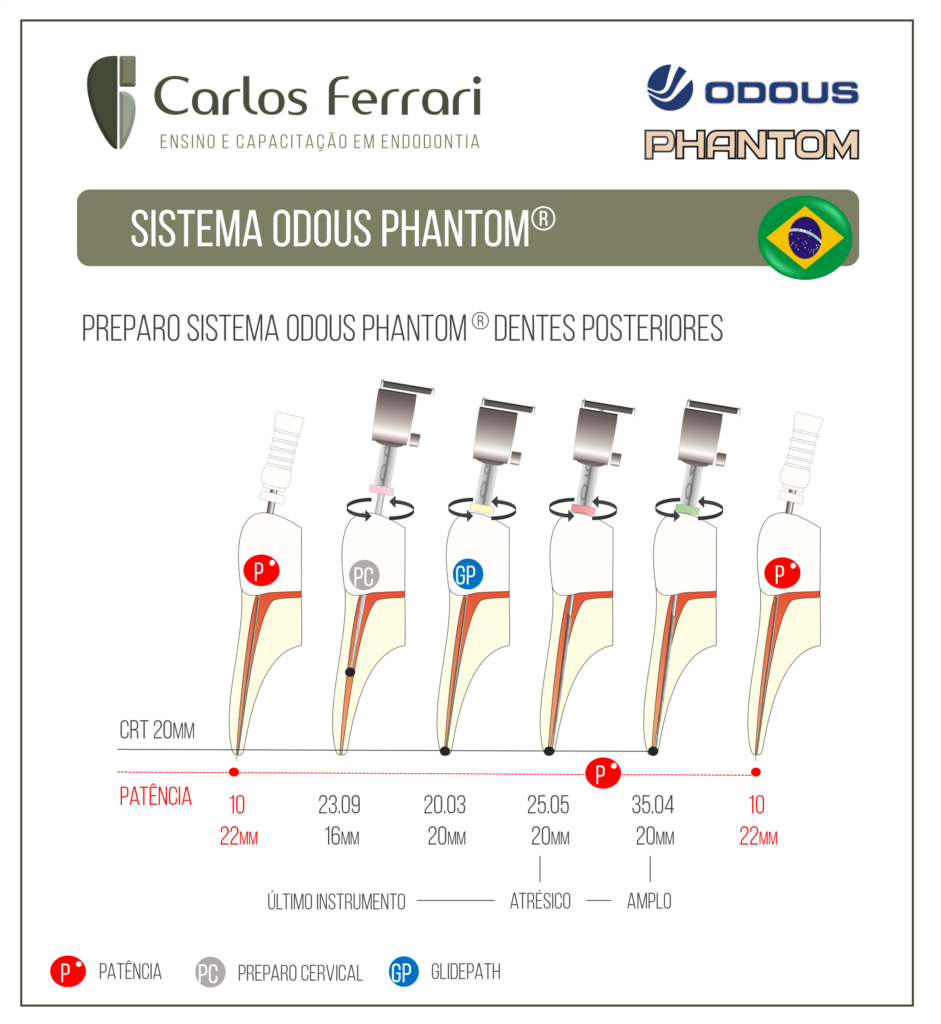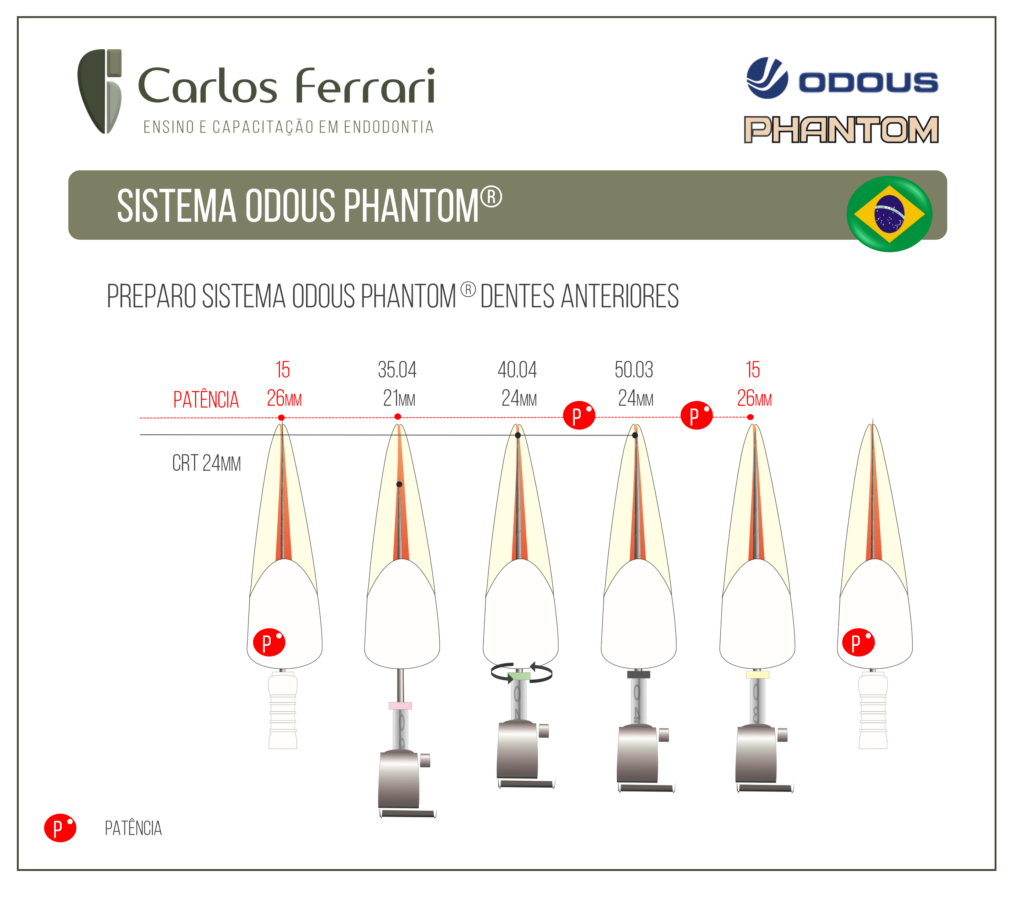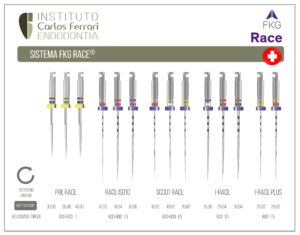Limas Odous Phantom. Descrição básica do sistema de limas rotatórias Phantom sugerido para os alunos em nossos cursos, parte do guia para os principais sistemas disponíveis no Brasil.


Descrição da técnica delimas odous phantom segundo o fabricante:
Sequência Mecanizada para Instrumentação – ODOUS Phantom
Prof. Nilton Vivacqua
1-) Exploração limas odous phantom– com Lima Tipo C #15 ou menor, use movimento de Cateterismo, até próximo
do Comprimento Aparente do Dente (CAD), medido no RX inicial. Importante usar até a lima #15.
(Dica: use Contra-ângulo Oscilatório).
2-) Preparo Cervical/Médio limas odous phantom – no programa Rotatório [Orifice Shaper (OS) 500 rpm – 2,5 a 3 N.cm], c/ OS 23/.09, use movimentos de Bicada, para penetração, e Pincelamento, para Anti-Curvatura. Intercale o Passo 6, repita e limite conforme: a-) Condutos Constritos e Médios (#15 a #25 justa apicalmente) – até ± 5 mm aquém do CAD ou até a curvatura. b-) Condutos Amplos (#25 folgada apicalmente) – até ± 4 ou 3 mm aquém do CAD ou até a curvatura.
3-) Patência Foraminal e Odontometria limas odous phantom– com uma lima Tipo C #15 ou menor, use movimentos de Alargamento até a passagem pelo Forame (FO) (Dica). Determine a Lima Anatômica Inicial (LAI) (Lima .02 de NiTi preferencialmente) e o
Comprimento até o FO, usando o “Zero/Apex” do Localizador Eletrônico Foraminal (LEF) c/ a LAI ajustada nesta posição.
4-) Preparo Apical limas odous phantom– com o Comprimento de Trabalho (CT) estabelecido, escolha a sequência abaixo conforme a
amplitude da aferição com a LAI, feita na Odontometria:
a-) Condutos Constritos (LAI #10 – #15) use a sequência até o CT: GP 20/.03, AP 25/.05, AP 35/.04
b-) Condutos Médios (LAI #20 – #25) use a sequência até o CT: AP 25/.05, AP 35/.04, AP 40/.04
c-) Condutos Amplos (LAI #30 – #35) use a sequência até o CT: AP 35/.04, AP 40/.04, AP 50/.03
No programa Rotatório [GlidePath (GP) 350 RPM – 1 a 1,5 N.cm; Apical Prep (AP) 350 RPM – 1,5 a 2 N.cm], use
movimentos de Bicada, até alcançar o CT determinado. Em caso de dificuldade, intercale o
Passo 6, faça movimentos curtos de avanço e/ou aumente 0,5 N.cm no Torque. Não Force!
A Lima Anatômica Final (LAF) deve ser, no mínimo, 3 instrumentos acima da LAI.
Ao finalizar, confirme a LAF c/ o LEF no FO. Se necessário, em condutos com LAI > #40,
complemente com instrumentos mais calibrosos. Condutos c/ degraus, desvios, entupimentos,
obturações, atresias e curvaturas acentuadas, podem exigir alterações. Em achatamentos, usar
o C.A. Oscilatório c/ limas manuais, mov. de Limagem, ou Ultrassom.
5-) Obturação – Selecione um cone de guta percha com a conicidade similar àquela
da última lima utilizada, e siga com a técnica de obturação de sua escolha.
6-) Irrigação – Utilize irrigação copiosa a cada troca de lima. Sempre Limpe as
Espiras e Recapitule o Passo 1.
https://odousdedeus.com.br/phantom/?p=phantom
limas odous phantom





